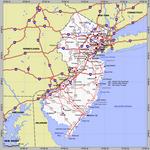On the way back from dinner I decided to walk through some of the neighborhoods and take a look at some of the houses. This was spur of the moment and most are just grab shots. I have little to no information about any of the structures. If you have info such as names or history of any of the buildings I would appreciate you forwarding the info to me.
Cape May is one of America's most genuine tributes to the Victorian era. The entire town exudes the artistic excess of the 19th century: it looks like 1870 adjusted to include automobiles and portable phones. Behind this living exhibit are the 4,700 Cape May residents, intent on preserving the historical authenticity that makes their town unique among Atlantic coast destinations.
Named for Cornelius Jacobsen Mey, a Dutch sea captain who explored the area in 1620, Cape May is the grandam of the Atlantic coast. It was first settled by migrant whalers in the mid-1600s and became a popular summer retreat for Philadelphians in the early 1800s. It was accommodating and majestic, and attracted elite admirers -- politicians like Henry Clay, Abraham Lincoln and Ulysses S. Grant, and entertainers and businessmen like P.T. Barnum, John Philip Sousa and Henry Ford.
When a fire claimed 30 blocks of Cape May in 1878, visitors shunned the resort and moved up the coast to Atlantic City for their summer recreation.
But Cape May rose from the ashes and became even grander than before. New buildings blossomed. They were elaborate homes in High Victorian architectural style: sweeping verandas, whimsical gables and turrets, fancy ornamentation, bright colors and intricate cutout designs. Visitors came back, and so did the celebrities. In 1890 and 1891, President Benjamin Harrison vacationed in Cape May, setting up the "Summer White House" in the Congress Hall Hotel. Auto magnates Henry Ford and Louis Chevrolet raced on the beach there in 1905.
Cape May has survived the Great Depression and World War II, not to mention a number of violent Atlantic storms. A brutal nor'easter ravaged the coast in 1962, resulting in more than $1 million in damage. Again, Cape May's popularity waned. Could the town reinvent itself a third time?
It did, with the help of grand, colorful Victorians. Residents and business owners (realizing that historical interest might draw people back to Cape May) began restoring their Victorian-style homes and buildings with zeal. In 1976, Cape May was declared a National Historic Landmark. The visitors poured in.
By Alexis Sweeney
Special to SunSpot
Originally published May 18, 2001
Baltimore Sun
Click on the images below for a larger picture.













